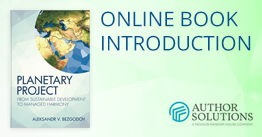Global Economic Outlook for Globe, Russia and Saudi Arabia (Reflection on oil & gas sector) 2017

10/02/2017
Against the backdrop of a highly uncertain outlook and fatter than usual tails, we expect to be cautious in overall scenario as per the dependency on the oil & gas is concerned, sticking closely to our secular framework that emphasizes these key factors:
- A focus on capital preservation and a focus on tail risks, not just the most likely baseline.
- De-emphasizing trades that rely on a high level of central bank support.
- Guarding against the asymmetric risk of rising yields and especially against negative yields.
- Focusing on security selection O&G sector.
- Utilizing teams across the world to nd the best investment opportunities.
- A very selective approach on the eurozone.
- Careful overall portfolio positioning combined with active management to take advantage of periods of volatility and market dislocation.
The experience of the past year has highlighted political risk and central bank policy exhaustion. At a time of fair to expensive valuations and less liquid financial markets, we have seen that it does not take much to prompt bouts of market volatility. By keeping portfolios lighter on risk and by being tactical and exible as active managers, we can prepare for and look to benefit from market turning points. We think that patience will be rewarded
Russia
Oil accounts for some 13% of Russia’s GDP and a considerable larger share of its exports. There are many predictions of how oil prices will develop in future but one thing is relatively widely agreed upon: the oil price won’t bounce back above 100 USD per barrel in the near future. It is also almost as widely agreed that 2016 will mark the low-point of prices. For example The World Bank expects oil price to recover to 48 USD by 2017.
Central Scenario - 2017 economic outlook (oil averages $46-55)
GDP | 1.3% |
Inflation (year-end) | 5.5% |
Inflation (average) | 6.6% |
Consumer spending | 1.6% |
Investment | 2.2% |
Industrial output | 1.7% |
Rouble to US dollar average | 64-69 |
Rouble to the Euro average | 72-77 |
Economic scenarios and the rouble for 2017 at different oil prices
| Average oil price 2016 | GDP | Inflation average | Rouble/US$ Average | Rouble/€ |
|---|---|---|---|---|
$80-85 | 3.3% | 5.8% | 45-52 | 52-58 |
$70-80 | 2.8% | 6.0% | 52-57 | 58-64 |
$60-70 | 2.4% | 6.4% | 57-60 | 64-66 |
$55-60 | 1.8% | 6.6% | 60-63 | 66-69 |
$50-55 | 1.3% | 7.0% | 62-67 | 69-73 |
$45-50 | 0.3% | 7.7% | 64-69 | 72-77 |
$35-45 | -1.3% | 8.2% | 63-69 | 74-78 |
Saudi Arabia
The deficit shrank to 297 billion riyals ($79 billion) in 2016. That was well below a record 367 billion gap in 2015, and below the government's projection in its original 2016 budget plan of a deficit of 326 billion riyals.
The financial challenges for Saudi Arabia stem largely from the fall in the global price of oil over the past 2½ years. It is not yet been announced how the 2016 deficit stacks up as a percentage of the economy. It was 15 percent of GDP in 2015.
The drop in the deficit is nonetheless likely to reassure international investors worried about Saudi Arabia's ability to cope with an era of cheap oil. The riyal came under speculative pressure this but currency jitters have eased in recent months.
Riyadh slashed spending on infrastructure and perks for civil servants to get its finances under control. For the first time in years, it kept its spending below its original budget projection in 2016; actual spending was 825 billion riyals compared with a projection of 840 billion riyals.
Revenues came in slightly higher than expected at 528 billion riyals instead of 514 billion riyals as the government raised cash with steps such as higher municipal and visa fee.
In its 2017 budget plan, Riyadh said it would increase spending to 890 billion riyals from the 840 billion riyals originally projected for 2016. But next year's deficit will shrink further to 198 billion riyals because of higher oil prices and non-oil revenues, the government confirmed.
Oil prices have seen a steady decline since mid-2014 on the back of a glut in global supply and the failure of demand to keep pace. Major oil producer group OPEC refused in November 2014 to cut production in order to support prices, putting pressure not only on their own members but non-OPEC producers around the world, especially those in the U.S. with higher production costs.
There have been several "false dawns" for oil markets in which OPEC has signaled that it could be ready to freeze production levels (already at record highs) but those expectations have come to nothing at previous OPEC meetings – hence analyst skepticism over the latest announcement by Russia and Saudi Arabia took the view "that potential joint action discussion is a symbolic attempt to shore up sentiment since there is little else to lose given that most countries are already producing flat out. "Although cooperative action taken by the cartel and other key producers may prove to be more of an optics play than physically actionable, at a minimum, it alters sentiment, puts a floor into the market, and reminds the market of OPEC's capacity to cooperate. It would also prove that the prolific pronouncements of the cartel's demise are premature".









